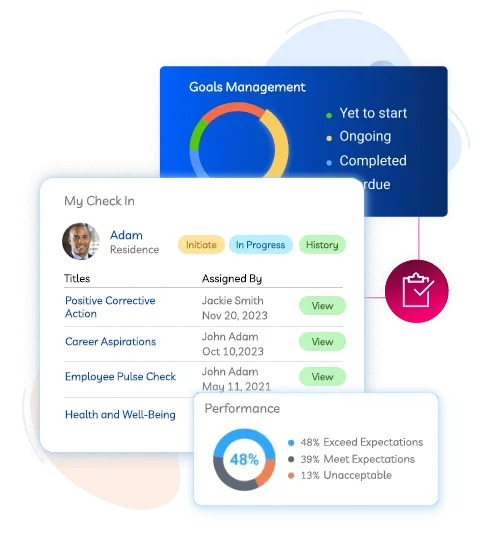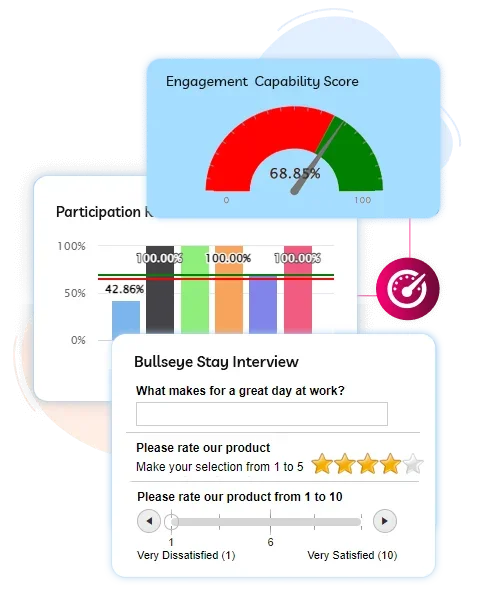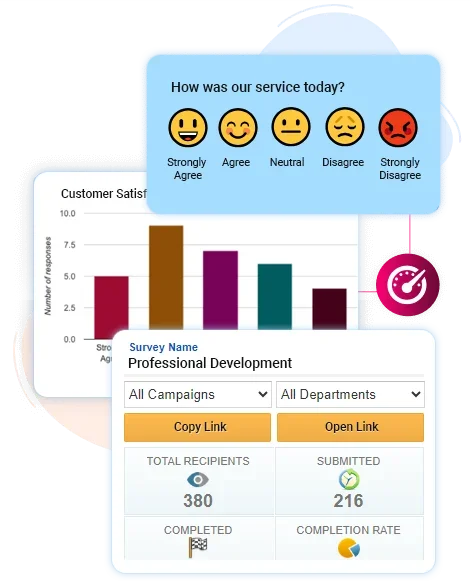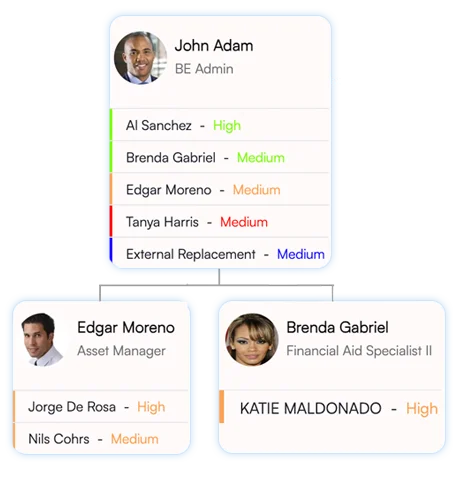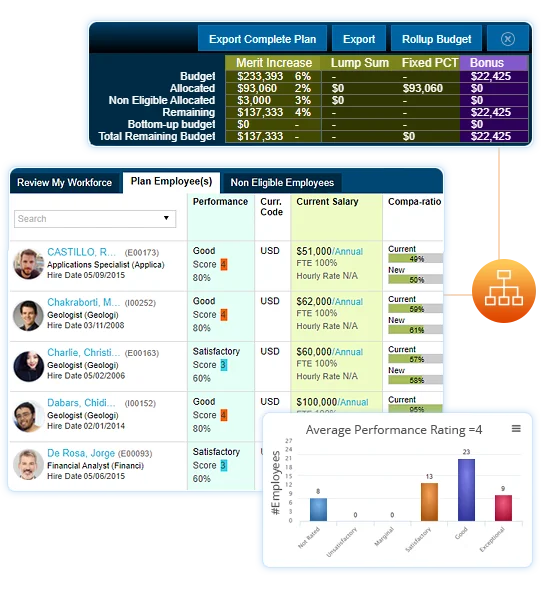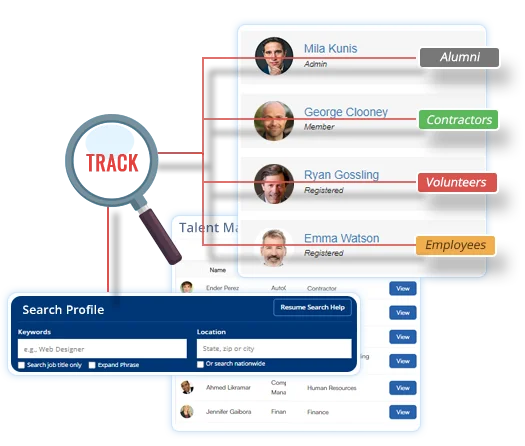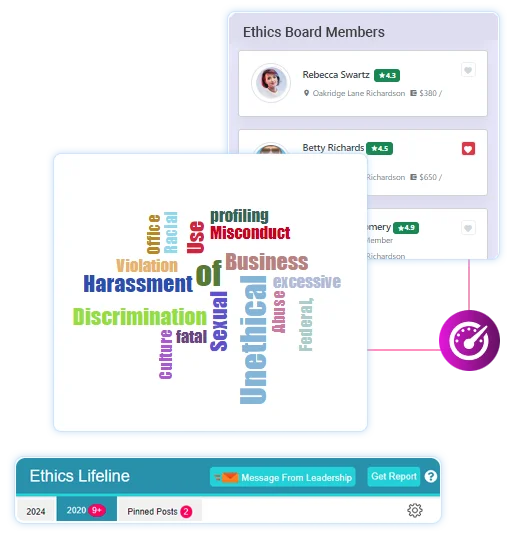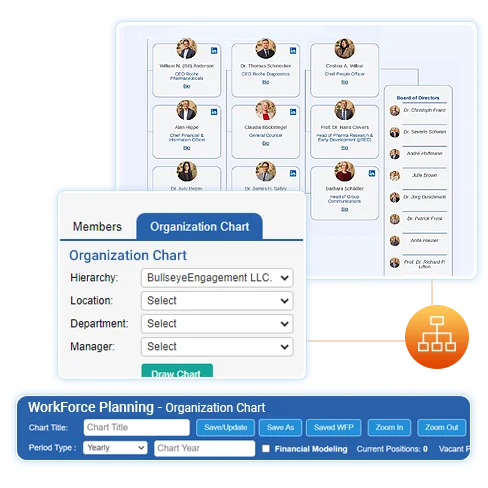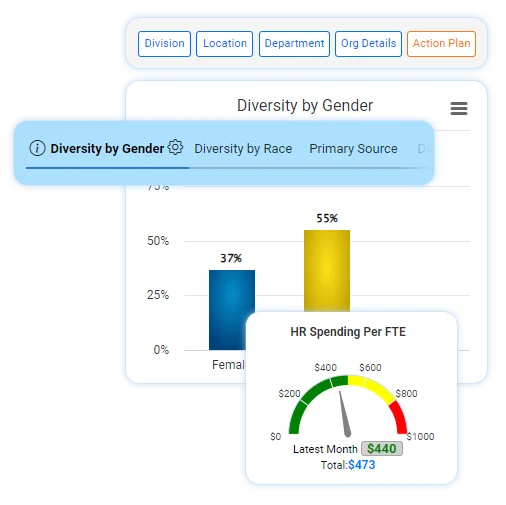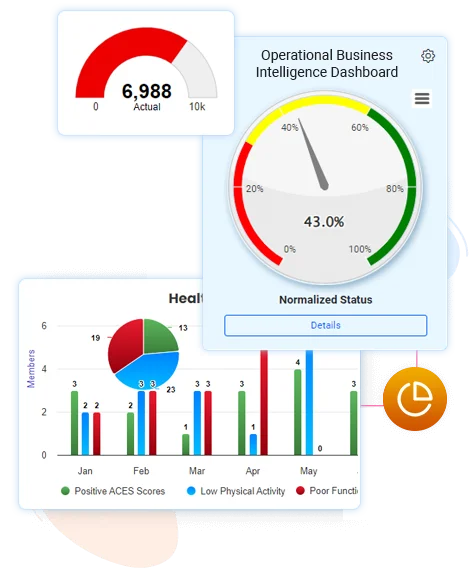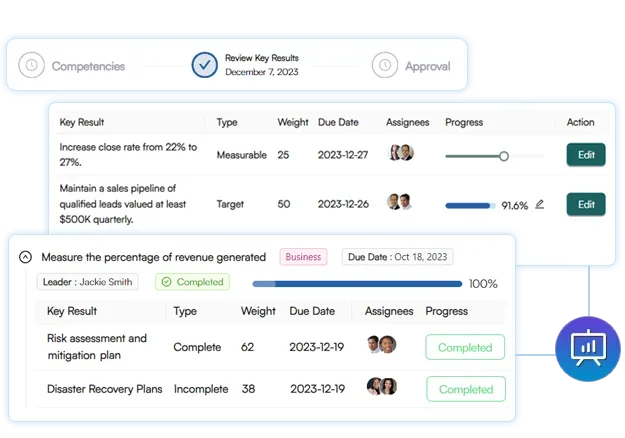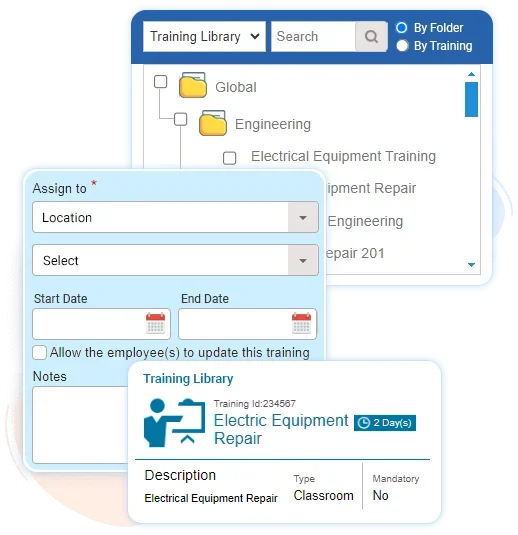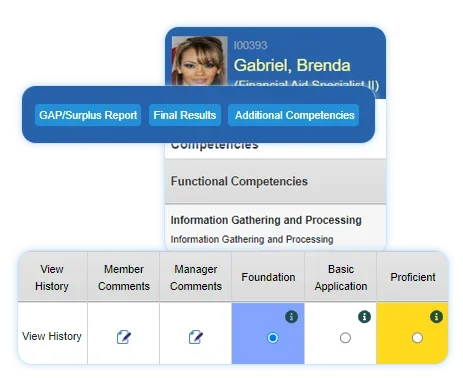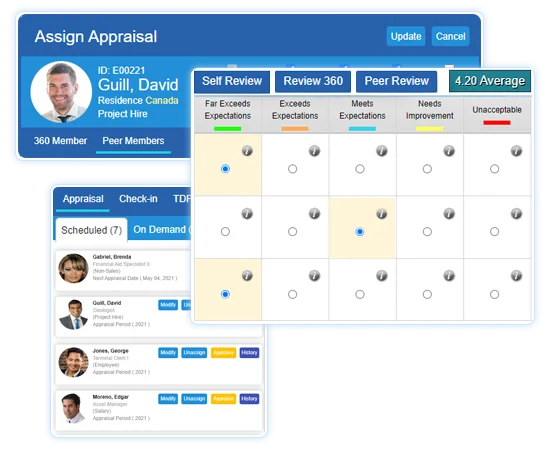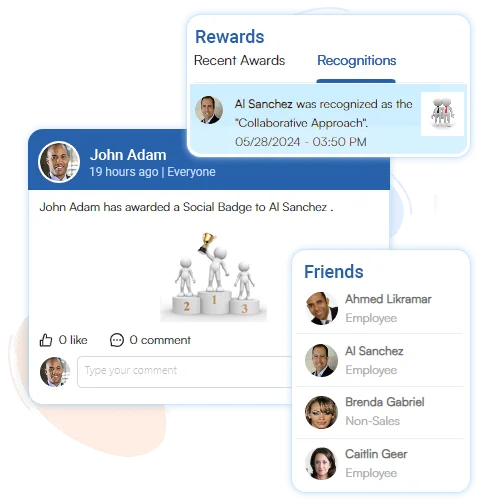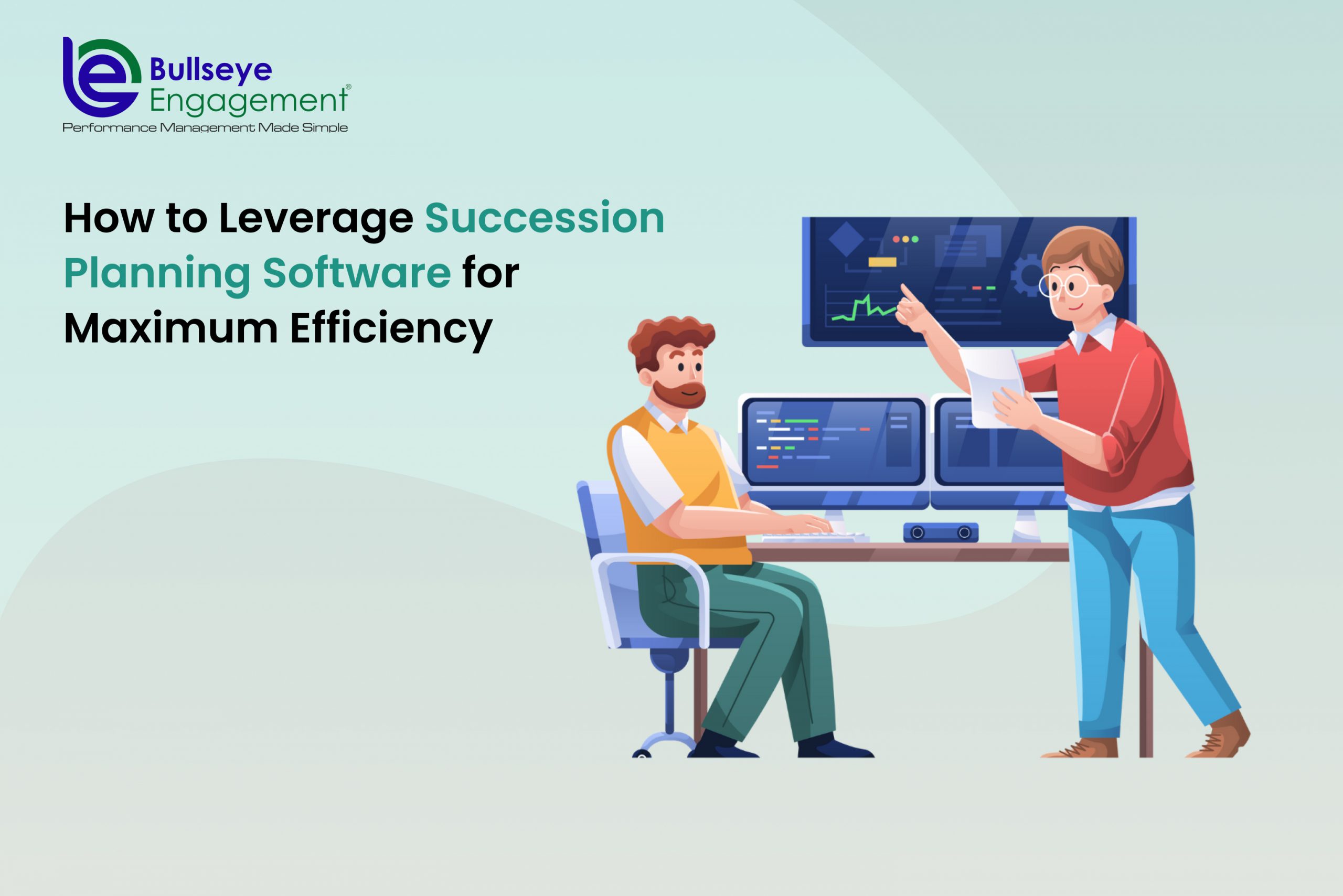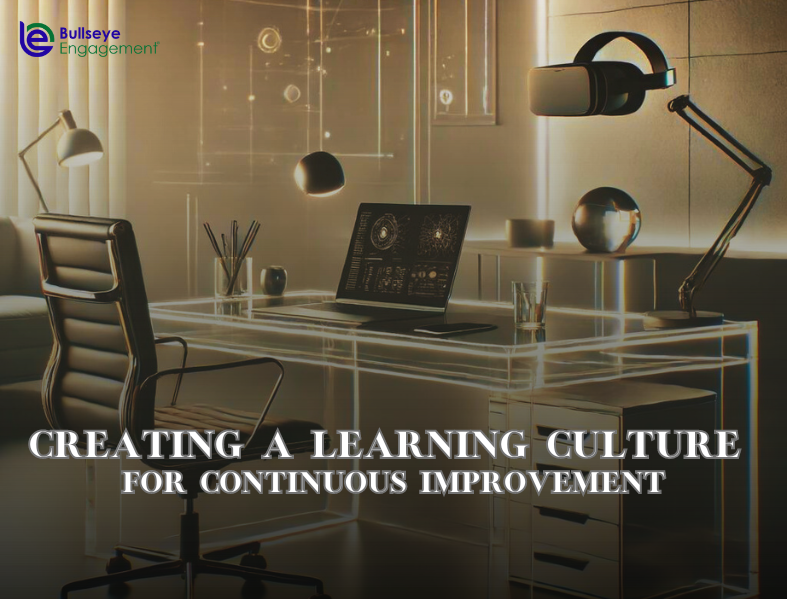Succession planning is a crucial component of any organization’s strategy because it ensures a seamless transition of power in case key employees depart. Fundamentally, succession planning entails finding and developing internal talent to fill key positions, ensuring business continuity, and encouraging growth and development inside the company.
Essentially, it involves identifying and nurturing internal talent to fill critical roles, ensuring business continuity, and fostering internal growth and development.
A spontaneous succession planning strategy is more important than ever in the fast-paced business environment of today.
In today’s fast-paced business environment, having a proactive succession planning strategy is paramount.
Organizations are increasingly relying on HR software solutions to meet this need and guarantee optimal efficiency in this process. These software tools offer a whole range of capabilities and resources to help organizations manage, evaluate, and develop their talent pools.
With the blog post “How to Leverage Succession Planning Software for Maximum Efficiency,” BulleyeEngagement will go over the ways HR software may
In this article, titled How to Leverage Succession Planning Software for Maximum Efficiency we will explore how HR software, such as the one offered by BullseyeEngagement, can help organizations achieve optimal efficiency in their succession planning processes.
Table of Content
- Let’s do a quick run-through of what Succession Planning Software is
- Succession Planning Software offers a multitude of benefits. Explore why companies need it
- The Role of Employee Engagement in Effective Succession Planning Software
- Avoid all ‘what-if situations’ with BullseyeEngagement’ Succession Planning Software
- 5 effective ways in which you can leverage Succession Planning Software for Maximum Efficienc
- Conclusion
Let’s do a quick run-through of what Succession Planning Software is
Let’s start by giving a quick description of what Succession Planning Tools includes. A specialized tool called succession planning software helps businesses identify and develop their internal talent pool for future leadership positions. To enable a seamless transition when key personnel leave their positions, it streamlines the process of finding potential successors, evaluating their readiness, and improving their abilities.
Features like talent profiling, skill gap analysis, and performance tracking are frequently included in this program. It makes it possible for HR experts and leadership teams to construct succession plans, establish growth objectives, and track advancement.
Succession Planning Software offers a multitude of benefits. Explore why companies need it
Succession planning guarantees that a business can efficiently fill crucial roles as they become available. Many businesses are using succession planning tools to do this efficiently.
Succession planning ensures that a business can smoothly fill critical positions when they become vacant. Numerous businesses are now turning to succession planning tools to streamline this process efficiently.
The Risk of Vacant Roles
Without a plan to fill critical vacant roles as they arise, a company faces massive risks to its stability. These risks include disruptions in operations, loss of institutional knowledge, decreased morale among employees, and even financial setbacks.
Several scenarios illustrate the need for a well-thought-out succession planning system:
1. Promotion within the business/Internal promotions: There is a void left in the prior role when a key employee is elevated to management or another crucial position. The use of succession planning software makes it easier to find and train internal candidates who can take over these positions with ease.
2. Unexpected Loss from Attrition: Employees may abruptly depart the organization for a number of different reasons. Organizations can prepare for such losses by having a pool of potential replacements available thanks to succession planning software. Employees may leave the organization unexpectedly for various reasons. Organizations can proactively address these departures by maintaining a pool of potential replacements through the use of succession planning software.
3. Retirement: When employees of a company retire, their knowledge and experience go with them. Software for succession planning makes sure that their expertise is transferred to replacements and that the transition is painless.
4. Layoff or Dismissal: In some cases, companies may need to lay off or dismiss employees including key personnel. Succession Planning Software helps mitigate the impact of such departures by having backup plans in place.
The Role of Employee Engagement in Effective Succession Planning Software
Selecting the right succession planning software is crucial, and also employee engagement plays a big role in the effectiveness of the process.
Here’s why employee engagement plays a pivotal role in making succession planning software truly effective:
1. Identifying High-Potential Talent: Motivated workers are more likely to demonstrate their abilities and potential. Software for succession planning depends on finding and developing high-potential individuals. Employees who are more engaged are not only more noticeable in this regard but also more likely to take part actively in talent development initiatives.
2. Knowledge Transfer: Knowledge sharing and employee engagement are strongly related. The process of transferring crucial knowledge to possible successors is made considerably easier when employees are more inclined to share their knowledge and experience with their colleagues.
3. Cultural continuity: Engaged staff frequently exemplify the culture and values of the company. It ensures cultural continuity, keeps the workforce feeling comfortable, and lessens possible disruptions during leadership transitions when they are taken into consideration for important jobs.
4. Motivation and Commitment: Employees who are engaged are driven and dedicated to the success of the company. They are more likely to devote time and energy to improving their skills when they are involved in the succession planning process, making them better suited for future responsibilities.
5. Retaining Top Talent: Motivated workers are less likely to look for employment elsewhere. The risk of losing top talent to rival organizations is decreased by effective succession planning software, which not only identifies potential leaders but also helps to keep them on staff.
Avoid all ‘what-if situations’ with BullseyeEngagement’ Succession Planning Software
Businesses require an effective succession planning approach to deal with any “what-if” scenarios. The most effective instrument for overcoming these difficulties is BullseyeEngagement’s Succession Planning Software.
Examples of the issues that can be anticipated and addressed with the Succession Planning Tool:
| What tasks was this person responsible for? | What time frame are we looking at for the transition? | What timelines are in place for transition? |
| Who is going to pick up this person's projects/tasks? | How long do we need to cross-train someone into that position? | What paperwork must be filed and when? |
| Is the person going to be available to train the new employee? | What plans are in place in the event of loss? | Has the hiring process been started already? |
5 effective ways in which you can leverage Succession Planning Software for Maximum Efficiency
Here are five effective ways to make the most of Succession Planning Software:
1. Identifying Potential Successors: The first step in succession planning is to identify important people who could take on important jobs. Software for succession planning centralizes employee data, making it simpler to monitor performance, abilities, and career goals. This makes it possible for HR specialists and managers to identify high-performing workers with room for advancement who may be prepared for positions of leadership in the future.
2. Talent Assessment and Development: The program assists in evaluating the talent pool once possible successors have been identified. To assess the abilities and competencies of people, it provides tools like performance management, learning management systems, and competency frameworks. High-potential persons can acquire the abilities and information required to fulfill leadership roles successfully with the help of customized development plans.
3. Succession Pipeline Tracking: HR software provides a comprehensive view of the succession pipeline. Features like talent profiles, succession charts, and talent matrices allow organizations to monitor the progress of potential successors. This ensures they are on track to assume their future roles, helping organizations make informed decisions about development and promotions.
4. Data-Driven Decision-Making: Succession planning software enables data-driven decisions. Access to employee performance, skills, and development information allows organizations to select the best candidates for future leadership positions. This fosters a transparent and equitable succession planning process.
5. Integration with HR Processes: To maximize efficiency, integrate succession planning software with other HR processes such as recruitment, onboarding, and performance management. This ensures that succession planning is seamlessly embedded within the organization’s talent management strategy, creating an agile and responsive organization ready to adapt to evolving business demands.
Conclusion
In conclusion, it is impossible to overestimate the effectiveness of succession planning software. As we’ve shown in this article, it not only offers a host of advantages but also significantly raises employee engagement. Additionally, it serves as a safeguard, preparing organizations for improbable “what-if” situations. Businesses can increase their productivity and efficiency by utilizing this technology, resulting in a smooth change in leadership and a more promising future. More than just a tool, succession planning software is a calculated investment in the long-term viability and success of any organization.
